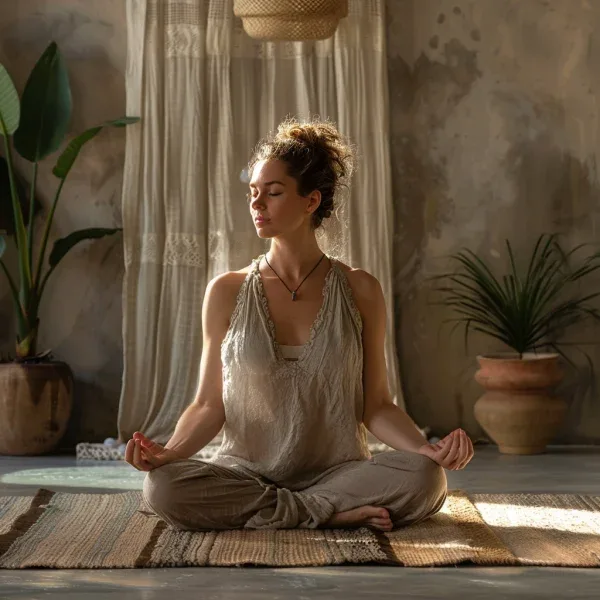by Gemma Delaney

In recent times, most of us have faced palpitations of anxiety, irrespective of global circumstances. Routine life stressors, including the delicate act of balancing personal life and work, often lead to situations that leave us feeling overstrained or unsettled. Therefore, it is delightful to discover research that indicates just a dozen yoga sessions can significantly elevate your mental health. But how does the act of unfurling your yoga mat really assist you?
Yoga serves as a vessel, cruising you into a universe of the present, facilitating a profound bond with your breath, your physical self, and the cosmos at large. Amid the recent events that have forced a wedge not just between us and the rest of the world, but also within our intimate circle, cherishing a deeper connection fosters immense contentment and emotional solidarity.
Cultivating a Yoga Routine to Dampen Anxiety
Pioneers in the field believe that the mentality you bring to your practice plays a crucial role when dealing with issues like anxiety. Adapting poses to different body types is key as it ensures you’re not exacerbating stress on an already tense body. Note that trying too hard to achieve a certain pose, characterized by strained arms and tense necks, cultivates more tension than relaxation.
Adjusting Forward Bends
Despite the calming effect of forward bends, pressing too much could result in the opposite outcome, especially if you’re already bearing tension. If a seated forward bend feels out of reach, try standing leg-apart pose, leaning forward from the hips, ensuring you are not bringing tension to your shoulders. Another technique is to invert the forward bend, with a block or bolster support beneath your buttocks for added comfort and restoration.
Easing Anxiety by Incorporating Yoga Practices Into Daily Life
Breathwork is an essential component of yoga and can be seamlessly incorporated into your self-care routine. Breathing patterns, particularly slower breathing combined with prolonged exhalations, are known to induce calmness. However, for those who suffer from bouts of severe anxiety, being overly focused on breath control may cause hyperventilation. As such, gaining familiarity with controlling your breath is significantly beneficial.
Breathing Practice: Intercostal Breathing
Intercostal breathing is a great place to start. The practice involves placing your hands on either side of your chest, feeling the expansion and contraction of the spaces between your ribs as you breathe in and out, an action known to soothe your nervous system.
Special Yoga Courses to Counter Anxiety
There exist comprehensive four-week yoga courses tailored to counter stress and promote overall well-being. Equipped with articles, audio lessons, yoga sessions focusing on grounding and emotional well-being, self-care, and present moment awareness, these courses prove truly beneficial. They offer specific breathwork sessions, meditation practices, journaling advice, and guidance on self-evaluation. Most importantly, they can be completed at your own pace, ensuring anxiety-reducing tools are always accessible to you.
Remember that yoga is not restricted to your mat – use breathwork and mindfulness in your daily life whenever you notice anxiety beginning to overshadow your day-to-day activities. Recognize that the breath is an invaluable tool when combating anxious feelings.
Yoga, anxiety, mental health, breathwork, self-care, forward bends, standing poses, intercostal breathing, everyday life, practicing yoga, tension relief, reducing stress, cultivating calmness, maintaining balance, achieving serenity, adapting yoga poses.
Leave a Reply